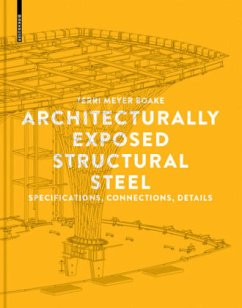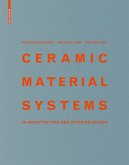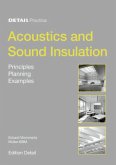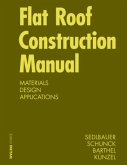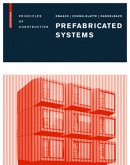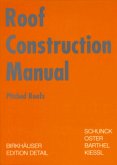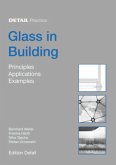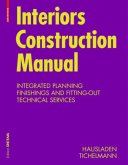This book provides the means for a better control and purposeful consideration of the design of Architecturally Exposed Structural Steel (AESS). It deploys a detailed categorization of AESS and its uses according to design context, building typology and visual exposure. In a rare combination, this approach makes high quality benchmarks compatible with economies in terms of material use, fabrication methods, workforce and cost.
Building with exposed steel has become more and more popular worldwide, also as advances in fire safety technology have permitted its use for building tasks under stringent fire regulations. On her background of long standing as a teacher in architectural steel design affiliated with many institutions, the author ranks among the world‘s best scholars on this topic.
Among the fields covered by the extensive approach of this book are the characteristics of the various categories of AESS, the interrelatedness of design, fabrication and erection of the steel structures, issues of coating and protection (including corrosion and fire protection), special materials like weathering steel and stainless steel, the member choices and a connection design checklist. The description draws on many international examples from advanced contemporary architecture, all visited and photographed by the author, among which figure buildings like the Amgen Helix Bridge in Seattle, the Shard Observation Level in London, the New York Times Building and the Arganquela Footbridge.
Freiliegende Stahlkonstruktionen kommen heute dank Fortschritten in der Brandschutztechnik auch bei anspruchsvollsten Bauaufgaben zum Einsatz. Deutschland, Österreich und die Schweiz können hierin von den jahrzehntelangen Erfahrungen profitieren, die insbesondere in Nordamerika und Großbritannien seit Aufkommen der High-Tech-Architektur und deren Weiterentwicklung hin zum Architecturally Exposed Structural Steel gereift sind.
Eine der weltweit besten Kennerinnen dieser Bautechnik und ihrer Potenziale für avancierte Architektur legt in diesem Buch dar, wie sich die hohen Qualitätsanforderungen insbesondere an die Detaillierung und das Finish mit einer kostensparenden Differenzierung vereinen lassen: je nach Bauaufgabe, aber auch nach unterschiedlicher visueller Exponiertheit der Teile sowie durch ein geschicktes Zusammenspiel mit der Entwurfsidee. Alle dargestellten Lösungen werden anschaulich und faszinierend mit Abbildungen aus dem umfangreichen Fotoarchiv der Autorin dargestellt.
Kostengünstige hohe Qualität in der anspruchsvollen Stahlarchitektur ist möglich dank des hier dargestellten systematischen Umgangs mit diesen Fragen, wie er im angloamerikanischen Raum seit langem praktiziert wird.
Hinweis: Dieser Artikel kann nur an eine deutsche Lieferadresse ausgeliefert werden.
Building with exposed steel has become more and more popular worldwide, also as advances in fire safety technology have permitted its use for building tasks under stringent fire regulations. On her background of long standing as a teacher in architectural steel design affiliated with many institutions, the author ranks among the world‘s best scholars on this topic.
Among the fields covered by the extensive approach of this book are the characteristics of the various categories of AESS, the interrelatedness of design, fabrication and erection of the steel structures, issues of coating and protection (including corrosion and fire protection), special materials like weathering steel and stainless steel, the member choices and a connection design checklist. The description draws on many international examples from advanced contemporary architecture, all visited and photographed by the author, among which figure buildings like the Amgen Helix Bridge in Seattle, the Shard Observation Level in London, the New York Times Building and the Arganquela Footbridge.
Freiliegende Stahlkonstruktionen kommen heute dank Fortschritten in der Brandschutztechnik auch bei anspruchsvollsten Bauaufgaben zum Einsatz. Deutschland, Österreich und die Schweiz können hierin von den jahrzehntelangen Erfahrungen profitieren, die insbesondere in Nordamerika und Großbritannien seit Aufkommen der High-Tech-Architektur und deren Weiterentwicklung hin zum Architecturally Exposed Structural Steel gereift sind.
Eine der weltweit besten Kennerinnen dieser Bautechnik und ihrer Potenziale für avancierte Architektur legt in diesem Buch dar, wie sich die hohen Qualitätsanforderungen insbesondere an die Detaillierung und das Finish mit einer kostensparenden Differenzierung vereinen lassen: je nach Bauaufgabe, aber auch nach unterschiedlicher visueller Exponiertheit der Teile sowie durch ein geschicktes Zusammenspiel mit der Entwurfsidee. Alle dargestellten Lösungen werden anschaulich und faszinierend mit Abbildungen aus dem umfangreichen Fotoarchiv der Autorin dargestellt.
Kostengünstige hohe Qualität in der anspruchsvollen Stahlarchitektur ist möglich dank des hier dargestellten systematischen Umgangs mit diesen Fragen, wie er im angloamerikanischen Raum seit langem praktiziert wird.
Hinweis: Dieser Artikel kann nur an eine deutsche Lieferadresse ausgeliefert werden.

